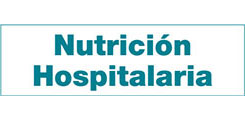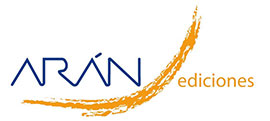Rodriguez-Concepcion, Manuel, Avalos, Javier, Bonet, M. Luisa, Boronat, Albert, Gomez-Gomez, Lourdes, Hornero-Mendez, Damaso, Limon, M. Carmen, Meléndez-Martínez, Antonio J., Olmedilla-Alonso, Begoña, Palou, Andreu, Ribot, Joan, Rodrigo, Maria J., Zacarias, Lorenzo, Zhu, Changfu (2018)
A global perspective on carotenoids: Metabolism, biotechnology, and benefits for nutrition and health.
Progress in Lipid Research
Yan, Chi, Wu, Xiaolin, Wang, Yi, Peng, Shengfeng, Chen, Jun, Zou, Liqiang, McClements, David Julian, Liu, Wei (2021)
Utilization of polysaccharide-based high internal phase emulsion for nutraceutical encapsulation: Enhancement of carotenoid loading capacity and stability.
Journal of Functional Foods
Augimeri, Giuseppina, Soto, Manuel, Ceraudo, Fabrizio, Caparello, Giovanna, Villegas Figueroa, Melisa, Cesario, Mirko, Caputi, Lorenzo S., Calderón, Berniza, Bonofiglio, Daniela (2024)
Differences of skin carotenoids and adherence to the Mediterranean Diet pattern in adults from Southern Italy and Dominican Republic.
Journal of Translational Medicine
ERDEN, Yavuz, TEKIN, Suat, BETUL CEYLAN, Kevser, TEKIN, Cigdem, KIRBAG, Sevda (2019)
Antioxidant, Antimicrobial and Anticancer Activities of the Aspergillin PZ and Terphenyllin Secondary Metabolites: An in vitro Study.
Gazi University Journal of Science
Durán-Cabral, Madeline, Estévez-Santiago, Rocío, Winter-Matos, Alexandra, García-Estrella, Kilsaris, Olmedilla-Alonso, Begoña, García-Lithgow, Carlos H. (2025)
Assessment of Dietary Sodium, Potassium and Sodium-Potassium Ratio Intake by 72 h Dietary Recall and Comparison with a 24 h Urinary Sodium and Potassium Excretion in Dominican Adults.
Nutrients
Li, Xue, Guo, Can, Zhang, Yu, Yu, Li, Ma, Fei, Wang, Xuefang, Zhang, Liangxiao, Li, Peiwu (2023)
Contribution of Different Food Types to Vitamin A Intake in the Chinese Diet.
Nutrients
García-Lithgow, Carlos Heriberto, Durán-Cabral, Madeline, Winter-Matos, Alexandra, García-Estrella, Kilsaris, García-Durán, Julen, Di-Sanzo, Estefanía, Martínez-De-La-Cruz, Nicole, Rodríguez-Abreu, Julia, Olmedilla-Alonso, Begoña (2023)
Assessment of 24 h Sodium and Potassium Urinary Excretion in Normotensive and Hypertensive Dominican Adults.
Nutrients
Institute of Medecine (IOM). Food and Nutrition Board 2000. Dietary References Intakes for Vitamin C, Vitamin E, Selenium, and Carotenoids. Washington, DC. National Academy Press.
Institute of Medecine (IOM). Food and Nutrition Board, 2001. Dietary References Intakes for Vitamin A, Vitamin K, Arsenic, Boron, Chromium, Cooper, Iodine, Iron, Manganese, Molybdenum, Nickel, Silicon, Vanadium, and Zinc. Washington, DC. National Academy Press.
Maiani G, Caston MJP, Catasta G, Toti E, Cambrodon IG, Bysted A, et al. Carotenoids: Actual knowledge on food sources, intakes, stability and bioavailability and their protective role in humans. Mol Nutr Food Res 2009;53(2):194-218.
Seddon JM, Ajani UA, Sperduto RD, Hiller R, Blair N, Burton TC, et al. Dietary carotenoids, vitamin-A, vitamin-C, and vitamin-E, and advanced age-related macular degeneration. JAMA 1994;272(18):1413-1420.
Zampatti S, Ricci F, Cusumano A, Marsella LT, Novelli G,Giardina E. Review of nutrient actions on age-related macular degeneration. Nutr Res 2014; 34(2): 95-105.
Chew EY, Clemons TE, Sangiovanni JP, Danis RP, Ferris FL, 3rd, Elman MJ, et al. Secondary analyses of the effects of lutein/zeaxanthin on age-related macular degeneration progression: AREDS2 report No. 3. JAMA ophthalmology 2014; 132(2):142-9.
Clinton SK, Emenhiser C, Schwartz SJ, Bostwick DG, Williams AW, Moore BJ, et al. Cis-trans lycopene isomers, carotenoids, and retinol in the human prostate. Cancer Epidemiol Biomarkers Prev 1996;5(10):823-833.
Granado F, Olmedilla B,Blanco I. Nutritional and clinical relevance of lutein in human health. Br J Nutr 2003;90(3):487-502.
Rao AV, Ray MR, Rao LG. Lycopene. Adv Food Nutr Res 2006;51:99-164.
Fiedor J, Burda K. Potential Role of Carotenoids as Antioxidants in Human Health and Disease. Nutrients 2014;6(2):466-488.
World Health Organization (WHO). Micronutrient deficiencies. Vitamin A Deficiency. Available at: http://www.who.int/nutrition/topics/vad/en/. (Accessed October 2016).
Food and Agriculture Organization of the United Nations (FAO). Perfiles Nutricionales por Países – La República Dominicana 2003. Available at: http://www.fao.org/docrep/017/aq021s/aq021s.pdf (Accessed October 2016).
West Jr KP, Rice A,Sugimoto JD. Tables on the Global Burden of Vitamin A Deficiency and Xerophthalmia among Preschool Aged Children and Low Vitamin A Status, Vitamin A Deficiency and Maternal Night Blindness among Pregnant Women by WHO Region. 2005 Available at: http://www2.vitaminangels.org/sites/default/files/Tables%20on%20the%20Global%20Burden%20of%20Vitamin%20A%20Deficiency%20and%20Xerophthalmia%20Among%20Preschool%20Aged%20Children%20and%20Low%20Vitamin%20A,%20Feb%202005%20-%20West,%20Rice,%20et%20al.pdf. (Accessed July 2016).
Menchú MT MH, Dary O. La calidad de la dieta en República Dominicana aproximada con los datos de la Enigh-2007.2013. Available at: http://pdf.usaid.gov/pdf_docs/PA00JC6S.pdf (Accessed July 2016).
International Food Policy Research Institute. Nutrition Country Profile: Dominican Republic. 2014. Available at: http://globalnutritionreport.org/files/2014/11/gnr14_cp_dominican_republic.pdf. (Accessed September 2016).
Tsutsumi C, Okuno M, Tannous L, Piantedosi R, Allan M, Goodman DS, et al. Retinoids and retinoid-binding protein expression in rat adipocytes. J Biol Chem 1992; 267(3):1805-1810.
Parker RS. Carotenoids in human-blood and tissues. J Nutr. 1989;119(1):101-104.
Johnson EJ. Obesity, lutein metabolism, and age-related macular degeneration: A web of connections. Nutr Rev 2005;63(1):9-15.
Garcia OP, Long KZ,Rosado JL. Impact of micronutrient deficiencies on obesity. Nutr Rev 2009;67(10):559-572.
Kimmons JE, Blanck HM, Tohill BC, Zhang J,Khan LK. Associations between body mass index and the prevalence of low micronutrient levels among US adults. MedGenMed 2006;8(4):59.
Lim SS, Vos T,Flaxman AD. A comparative risk assessment of burden of disease and injury attributable to 67 risk factors and risk factor clusters in 21 regions, 1990-2010: a systematic analysis for the Global Burden of Disease Study 2010. Lancet 2012;380(9859):2224-60.
DOI: 10.1016/S0140-6736(12)61766-8
Moreiras O CA, Cabrera L, Cuadrado C, Ingestas diarias recomendadas de energía y nutrientes para la población española, in Tablas de Composición de Alimentos. E. Pirámide, Editor. 2011. p. 214-215.
Ortega RM L-SA, Andres P, Requejo AM, Aparicio-Vizuete A, Molinero LM.DIAL software (version 2.16) for assessing diets and food calculations. Madrid (Spain) 2012.
Estevez-Santiago R, Beltran-de-Miguel B, Cuadrado-Vives
C,Olmedilla-Alonso B. Software application for the calculation of dietary intake of individual carotenoids and of its contribution to vitamin A intake. Nutr Hosp 2013;28(3): 823-829.
Beltran B, Estevez R, Cuadrado C, Jimenez S, Alonso BO. Carotenoid data base to asess dietary intake of carotenes, xantophyls and vitamin A; its use in a comparative study of vitamina A nutritional status in young adults. Nutr Hosp 2012;27(4):1334-1343.
Granado F, Olmedilla B, Blanco I, Rojas Hidalgo E. Carotenoid composition in raw and cooked spanish vegetables. J Agric Food Chem 1992;40(11): 2135-2140.
DOI: 10.1021/jf00023a019
Olmedilla B, Granado F, Blanco I, Rojas Hidalgo E. Quantitation of provitamin-A and non-provitamin-A carotenoids in the fruits most commonly consumed in Spain, in Food and Cancer Prevention: Chemical and Biological Aspects, K.W. Waldron, I.T. Johnson, and G.R. Fenwick, editors. Royal Soc Chemistry: Cambridge; 1993. p. 141-145.
West CE PE. The carotenoid content of foods with special reference to developing countries. Arlington, VA: VITAL, International Science and Technology Institute 1993.
WHO/FAO. Consulation Report 2002. Human Vitamin and Mineral Requirements. Available at: http://www.fao.org/docrep/004/Y2809E/y2809e00.htm. (Accessed June 2016).
Organización de las Naciones Unidas para la Alimentación y la Agricultura (FAO) . Panorama de la Seguridad Alimentaria y Nutricional en Centroamérica y República Dominicana 2014. Available at: http://www.fao.org/3/a-i4349s.pdf (Accesed October 2016).
Institute of Medecine (IOM). Food and Nutrition Board 2005. Dietary Reference Intakes for Energy, Carbohydrate, Fiber, Fat, Fatty Acids, Cholesterol, Protein, and Amino Acids Washington DC. National Academy Press.
Saito I, Ozawa H, Bello MC, Moriwaki C, Ito M, Aono H, et al. Food intake and food consumption patterns of hospital workers in the dominican republic. Environ Health Prev Med 1998;3(1):31-6.
DOI: 10.1007/BF02931236
Beltran-de-Miguel B, Estevez-Santiago R,Olmedilla-Alonso B. Assessment of dietary vitamin A intake (retinol, alpha-carotene, beta-carotene, beta-cryptoxanthin) and its sources in the National Survey of Dietary Intake in Spain (2009-2010). Int J Food Sci Nutr 2015;66(6): 706-712.
DOI: 10.3109/09637486.2015.1077787
Vargas-Murga L, de Rosso VV, Mercadante AZ, Olmedilla-Alonso B. Fruits and vegetables in the Brazilian Household Budget Survey (2008-2009): carotenoid content and assessment of individual carotenoid intake. J Food Compost Anal 2016;50:88-96.
DOI: 10.1016/j.jfca.2016.05.012
Pilón de la Alimentación y Nutrición. República Dominicana. Guía Alimentaria Basada en Alimentos autóctonos de la República Dominicana 2009. Despacho de la Primera Dama. Subsecretaria de Nutrición, SESPAS. Available at: www.fao.org/3/a-as866s.pdf. (Accessed June 2016).
Nutrient Intakes from Food and Beverages. What We Eat in America, NHANES 2011-2012. Available at: https://www.ars.usda.gov/SP2UserFiles/Place/80400530/pdf/1112/tables_1-40_2011-2012.pdf (Accessed September 2016).
Estevez-Santiago R, Beltran-de-Miguel B,Olmedilla-Alonso B. Assessment of dietary lutein, zeaxanthin and lycopene intakes and sources in the Spanish survey of dietary intake (2009-2010). Int J Food Sci Nutr 2016;67(3): 305-313.
DOI: 10.3109/09637486.2016.1147020
Oude Griep LM, Verschuren WMM, Kromhout D, Ocke MC,Geleijnse JM. Colors of Fruit and Vegetables and 10-Year Incidence of Stroke. Stroke 2011;42(11):3190-3195.
DOI: 10.1161/STROKEAHA.110.611152
USDA. 2011. choosemyplate.gov-vegetable-food gallery-Commonly eaten vegetables in each subgroup. Available at: http://www.choosemyplate.gov/food-groups/vegetables-foodgallery.html. (Accesed October 2016).
 Número de descargas:
32420
Número de descargas:
32420
 Número de visitas:
10645
Número de visitas:
10645
 Citas:
12
Citas:
12




